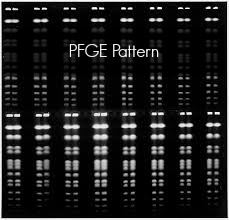At least 4 people have been sickened in an E. coli O157:H7 outbreak in Humboldt County, California, according to the Humboldt County Department of Health and Human Services (DHHS). Of those, 3 developed hemolytic uremic syndrome (HUS), a severe complication of E. coli poisoning that causes kidney failure.
 The first E. coli case was reported in July of this year, the second in the middle of August and the other two in October. Pulsed-field gel electrophoresis (PFGE) testing done by the California Department of Public Health (CDPH) found that the 4 cases are connected. “PFGE finds the genetic fingerprint of an E. coli isolate,” explains Fred Pritzker, a national food safety lawyer who represents E. coli victims. “When people are sickened by E. coli with matching PFGE patterns, it means that they were sickened by the same source, for example the same food product contaminated with the bacteria.”
The first E. coli case was reported in July of this year, the second in the middle of August and the other two in October. Pulsed-field gel electrophoresis (PFGE) testing done by the California Department of Public Health (CDPH) found that the 4 cases are connected. “PFGE finds the genetic fingerprint of an E. coli isolate,” explains Fred Pritzker, a national food safety lawyer who represents E. coli victims. “When people are sickened by E. coli with matching PFGE patterns, it means that they were sickened by the same source, for example the same food product contaminated with the bacteria.”
These 4 cases were caused by a very specific strain of E. coli that hasn’t been seen anywhere else in California, according to DHHS. All of the patients have been interviewed to find out what they had eaten and where they had eaten prior to getting sick, but DHHS has not yet determined the source of the outbreak.
“Typically, the causes are something you ate, something you bought at a store or maybe from a restaurant worker who didn’t wash his hands and contaminated some food,” said DHHS Public Health Nurse Eric Gordon.
To help solve the mystery behind these E. coli infections, DHHS is asking area health care providers to identify any cases of bloody diarrhea and to send those lab samples to the county. “The thought behind that is if we identify more cases, we’ll have more people to interview which increases the chances of us finding the smoking gun,” Gordon said.
Bloody diarrhea is a distinguishing characteristic of an E. coli infection. Other symptoms include severe abdominal cramping, nausea and vomiting.
Health officials are also recommending that people with bloody diarrhea or other E. coli symptoms see their medical provider, who can order lab tests to determine what might be causing their illness. The first set of tests determines if there is E. coli bacteria in the stool. The second determines the serotype (for example, O157). The third is the PFGE testing, which involves releasing the DNA from a cell, cutting it with enzymes and then separating the pieces by size.
According to the Centers for Disease Control and Prevention, an estimated 265,000 E. coli infections occur in the United States each year. The O157:H7 strain causes about 36 percent of these infections.




